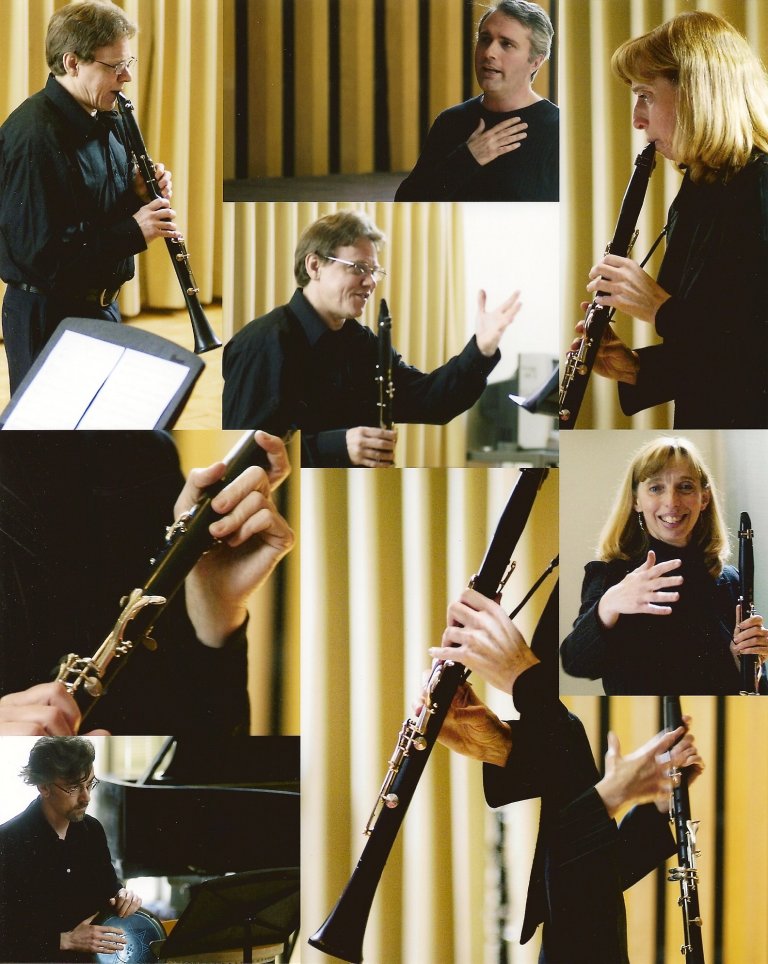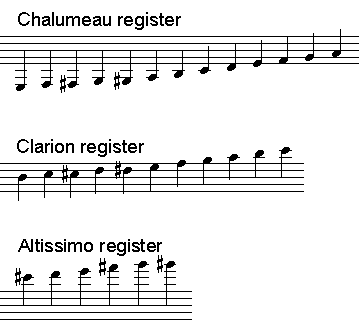Stephen
Fox
|
The Bohlen-Pierce scale is an alternative musical scale, arrived at by dividing the just twelfth (a 3:1 frequency ratio) into thirteen steps. The result is an exotic sequence of tones providing numerous consonant intervals and hence the promise of extensive musical possibilities to those willing to explore non-traditional sounds. The history, construction and previous musical application of the scale are described in detail on a website maintained by its co-inventor, Heinz Bohlen. This project to design and build Bohlen-Pierce clarinets began in 2003, when the writer was teaching at Musikk Instrument Akademiet in Sarpsborg, Norway, at the suggestion of Dr. Georg Hajdu, composer and professor at the Hochschule für Musik und Theater Hamburg. Construction of the first BP clarinets was begun in the woodwind class at M.I.A., and is now being carried out independently. The goal of the project is to design and build a family of clarinet-type instruments - soprano (the same size as the normal Bb clarinet), tenor (six BP scale steps below the soprano, in length between the conventional alto and bass) and contra (a twelfth below the soprano, i.e., the same size as the normal Eb contrabass) - tuned to the equal tempered Bohlen-Pierce scale, for the purpose of exploring and demonstrating the musical potential of the concept. The reason for choosing the clarinet as the first Bohlen-Pierce wind instrument is that it overblows at the twelfth, i.e., the second register is a twelfth above the fundamental register, as opposed to the octave for most other woodwinds; this makes adapting the clarinet to the BP scale very natural, since the scale uses the so-called “tritave” - a 3:1 frequency ratio, i.e., the perfect twelfth in conventional terminology - as its starting point. Though both just and equal tempered Bohlen-Pierce scales have been postulated, the equal tempered version would normally be chosen for tuning instruments of fixed pitch. Each equal tempered BP scale step has a frequency ratio of the 13th root of 3, or approximately 1.088 (corresponding to roughly 146 cents on the conventional 12 tone scale). Consonant Bohlen-Pierce intervals (see below) are generally based on odd number ratios: 3:1, 5:3, 7:3, 7:5, 9:5, etc. Some of these intervals (3:1 = perfect twelfth, 5:3 = just major sixth, 6:5 = minor third, etc.) are familiar, while others are not heard, or at least not recognised as consonances, in conventional Western music. The octave has no special status in this tuning system. The clarinet’s characteristic of overblowing at the twelfth, and the larger scale steps compared with the traditional 12 tone scale, mean that the Bohlen-Pierce clarinet is considerably simpler mechanically than conventional woodwinds. The low notes are handled by mechanism functioning the same way as the arrangement on the Boehm system clarinet; the rest of the tritave is produced by six open finger holes and a thumb hole - with no keywork necessary - and a left hand first finger key analogous to the normal clarinet throat A key. The second register is produced by a simple speaker key, and there is one trill key (not essential but useful). The fingering pattern is likewise very simple, with no fork fingerings necessary below the altissimo register. In terms of mouthpiece and tone production technique, the instrument is played in the same way as a conventional clarinet, except of course that the player needs to relearn how to “think” the notes and intervals in tune. The chart below gives fingerings, frequencies and the comparison with conventional tuning of the notes of the scale for the BP clarinets. While the mathematics of the Bohlen-Pierce scale have been analyzed in some depth over the last thirty years or so, so far the body of music created on this basis is still small, and the field is wide open to exploration by composers. At present there are no firm conventions or general practices regarding such matters as diatonic scale patterns, chordal structures and musical notation. A simple, pragmatic notation system specific to clarinets is described below. To date, four BP soprano clarinets have been completed, two of which were delivered in 2007 to Dr. Georg Hajdu in Hamburg, with the other two remaining in Canada. Work is underway on the first larger sized BP clarinet (the tenor). A BP metallophone - a mallet instrument similar to those used in Orff music programmes - has also been constructed, and has been delivered to Heinz Bohlen, who has been an enthusiastic supporter of this project. More tuned percussion instruments are planned. (Bohlen-Pierce instruments available for order are described here.) The premiere concert involving Bohlen-Pierce clarinets took place at the University of Guelph on March 20, 2008, presenting newly composed works by Owen Bloomfield and Todd Harrop, and featuring two soprano BP clarinets performed by Tilly Kooyman and the writer. (A review of the concert is given here; see below for photos of the performers and composers.) This followed a meeting with interested composers (Jascha Narveson, Gayle Young, Owen Bloomfield, Rob Polzoni, Todd Harrop and John Gzowski) which was held in Toronto in December 2006. The activities of this group are now organised under the ensemble tranSpectra. Audio files of two Bohlen-Pierce clarinet works, Wanderer by Owen Bloomfield and Calypso by Todd Harrop, are available here. At the Hochschule für Musik und Theater Hamburg a workshop concerning the Bohlen-Pierce clarinets took place on June 12, 2008. The following day a concert for two soprano Bohlen-Pierce clarinets with some additional instruments and electronics was presented, including works by composers Georg Hajdu, Sascha Lemke, Manfred Stahnke, Fredrik Schwenk and Peter-Michael Hamel. Details of this concert, including audio files, are available here. Future plans involve holding an international composition competition for Bohlen-Pierce instruments.
University
of Guelph concert, March 2008
|
|||||||||||||||||||||||||||||||||||||||||||||||||||||||||||||||||||||||||||||||||||||||||||||||||


